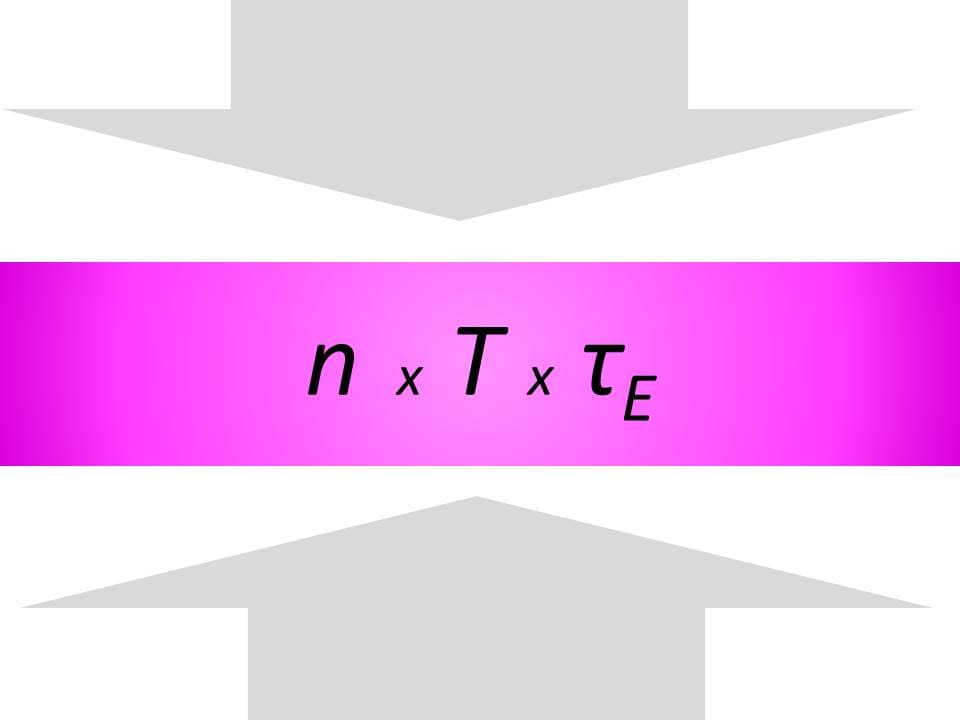“In the Sun, hydrogen fuses into helium releasing the solar energy that allows life on Earth.
Scientists around the world are trying to replicate this process using isotopes of hydrogen that, when fused, release an ENORMOUS AMOUNT OF ENERGY”
Giorgio Rostagni
The objective of the research is the construction of nuclear fusion plants for the production of electricity on a large scale, in a safe manner, at competitive costs and respecting the environment.
For this purpose, an ambitious research program for the production of energy from plasmas, or high-temperature ionized gases, has been developed for several decades, where fusion reactions occur between light nuclei, for example Deuterium and Tritium. The fuel for fusion plants is obtained from the mixture of these hydrogen isotopes, abundantly available on earth and easy to extract.
The fundamental principle of fusion is based on the collision of light, positively charged atoms which, overcoming the repulsion forces between particles, fuse together and in this process produce helium nuclei (α particles) and high-energy neutrons.
1 gram (= 1 paper clip) of fusion fuel will generate 90,000 kilowatt-hours of energy,
the equivalent to burning 11 metric tons (= 1 double-decker bus) worth of coal
Fusion could be very advantageous for society: read the FAQ
To ensure that the fusion reactions between these light hydrogen atoms are effective for producing energy, in addition to fuel, three fundamental conditions are needed at the same time:
– that the TEMPERATURE (T) is at least 150 MILLION DEGREES (10 times the temperature in the Sun)
– that the DENSITY (n), or, in other words, the number of particles in the container, is very low, but enough that there is a good chance that the particles will meet
– that the plasma is able to remain “hot” for a sufficiently long period (of the order of fractions of a second) called the CONFINEMENT TIME (τE), which corresponds to the ratio between the energy of the plasma and the energy that is lost.

When the product of density (n), temperature (T) and confinement time (τE) exceeds a certain threshold, ignition is obtained, a condition in which the heat generated by the fusion reactions “self-sustains” the reactions themselves in the reactor.
FUN FACT Where does the term “plasma” come from?
The term “plasma” was used for the first time in 1927 by the American Irving Langmuir, winner of the Nobel Prize in Physics, to indicate an ionized gas whose behavior is similar to that of a fluid that carries electrons, ions and impurities. The term was suggested to him by the analogy with blood plasma, a term introduced in the previous century by the Czech doctor Purkinje to indicate the fluid that carries white blood cells, red blood cells and nutrients.
@ISTP-cnr
Plasma confinement
How is it possible to confine/contain the plasma, suspending it to stop it from touching the walls of its container to prevent it from cooling, losing energy, or damaging the system?
In the stars, the plasma is confined by the intense gravitational field generated by its mass. There are no gravitational fields of this intensity on Earth; instead, intense magnetic fields are used that can confine the plasma.
However, this solution poses very complex technological problems linked in particular to the temperatures that pass, in the space of a few meters, from the 150 million degrees inside the burning plasma, to very low temperatures, close to absolute zero, necessary for the operation of the superconducting magnets that surround the plasma. This means that in our reactor room we will have both one of the hottest and one of the coldest places in the Universe side by side at the same time.
Achieving good plasma confinement is therefore an aspect of fundamental importance in fusion reactors which the scientific community seeks to answer through different approaches.
The two lines of research most pursued are magnetic confinement and inertial confinement.
In inertial confinement, high-power laser beams or beams of energetic particles are used to simultaneously bombard a hollow sphere of liquid deuterium and tritium from different directions, generating a plasma on its surface. The internal region of the sphere is then subjected to progressive compression towards the center until the density inside reaches very high values with an ignition temperature of about 100 million degrees Kelvin, but with a very short confinement time.
In magnetic confinement, the plasma is confined by magnetic fields that pass through the plasma. Deuterium and Tritium, which are charged particles, are trapped in the magnetic field and thus are kept away from touching the walls of the container.
The magnetic field is generated through electric currents that are made to flow in large coils placed around the vacuum chamber that contains the plasma.
In order to obtain a better confinement of the motion of the plasma particles and avoid drifts towards the walls, different configurations of the magnetic field – tokamak, stellarator and reversed field pinch – have been studied in order to form field lines which, like tracks for a train, keep the trajectory of the particles confined to a set path and away from the walls. The field lines wind in a helix in the plasma donut with different geometries.
Consorzio RFX participates in the European research program on magnetic confinement fusion. Learn more about our research here.
James Roberts, mechanical engineer at UKAKEA, tells us how fusion research is progressing with different scientific approaches with technological choices ranging from less complex to very complex.